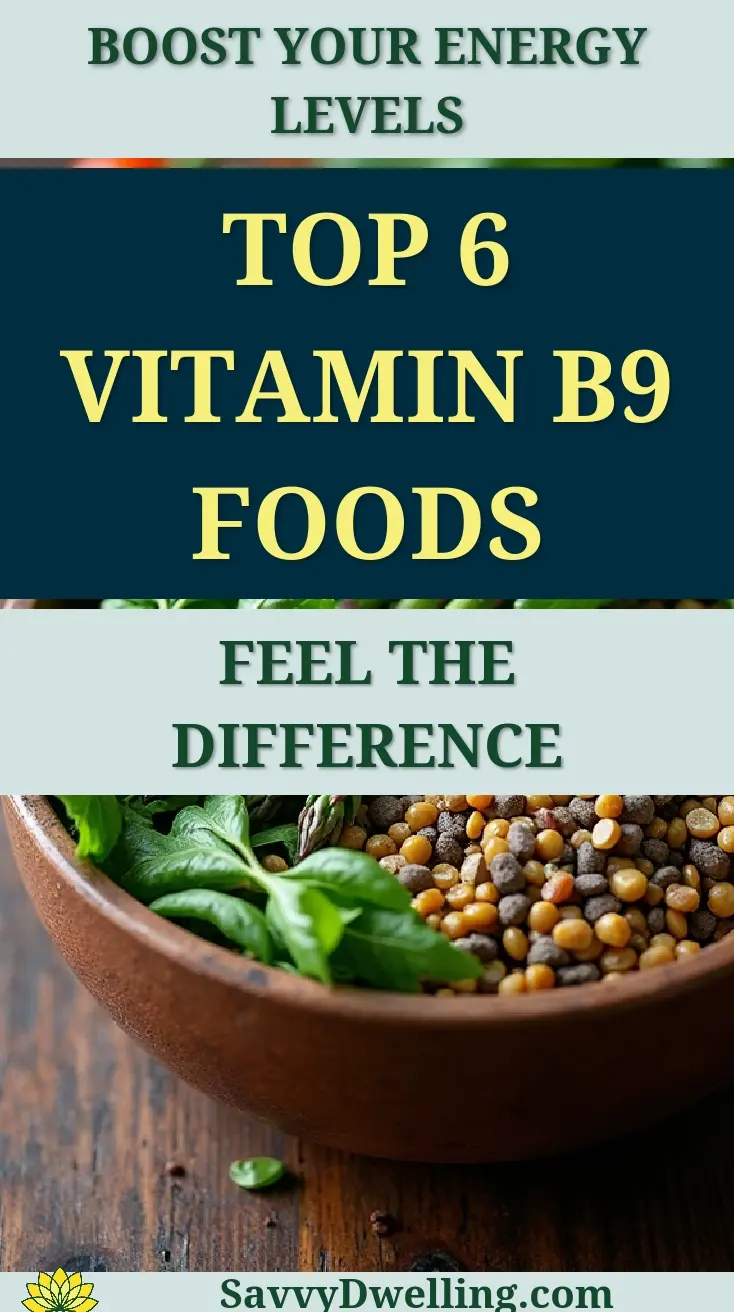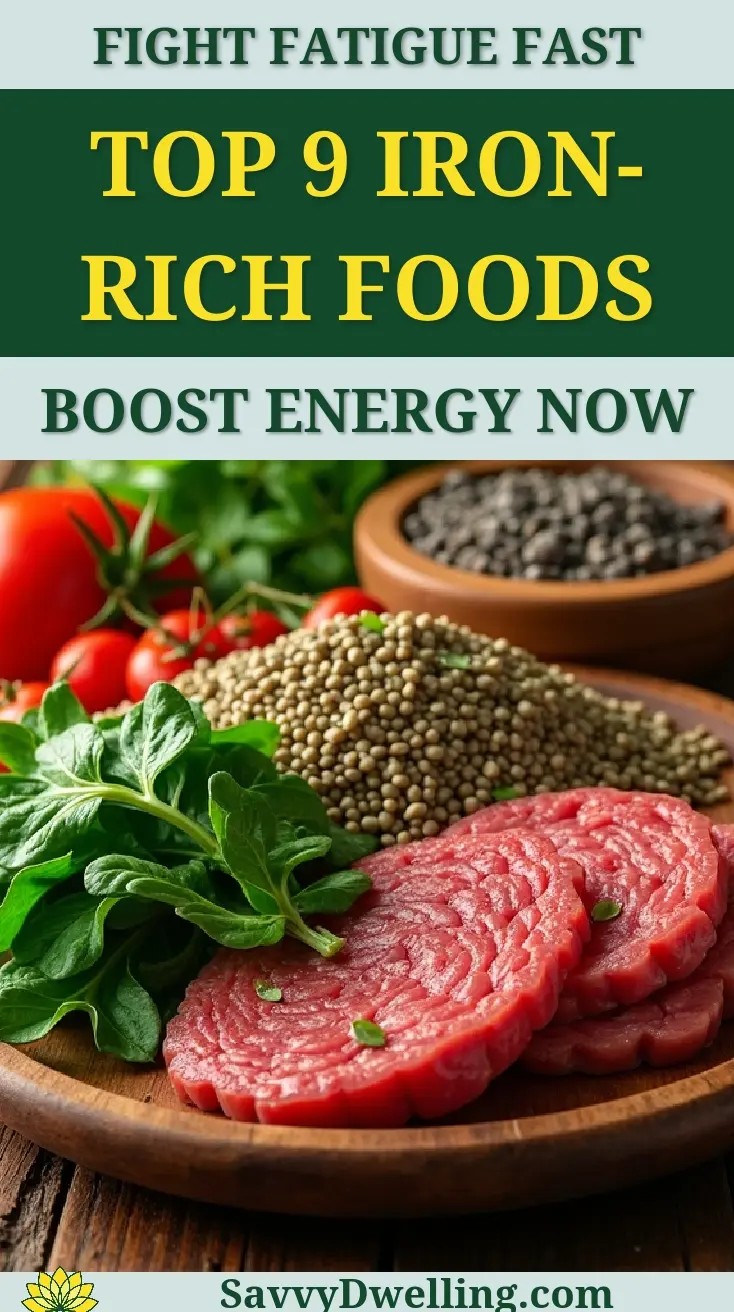10 Collagen-rich Foods That Support Youthful Skin and Healthy Joints Naturally
Noticing fine lines appearing earlier than expected, or feeling stiffness in your joints after a workout? Your body’s natural collagen production starts declining as early as your mid-twenties, dropping by about 1% each year. This protein powerhouse keeps your skin plump, your joints flexible, and your overall structure strong—but modern diets often fall short of supporting optimal collagen levels.
The good news is that specific foods can naturally boost your body’s collagen production and protect what you already have. We’ve researched the science behind collagen synthesis and identified ten everyday foods that work synergistically to support healthy skin elasticity and joint comfort. These aren’t exotic superfoods—they’re accessible ingredients you can easily incorporate into meals you’re already making.
Contents
- At a Glance: The Best Collagen-supporting Foods
- The Science Made Simple: Why Your Body Needs Collagen Support
- 1. Bone Broth: The Ultimate Collagen Powerhouse
- 2. Wild-caught Fatty Fish: Omega-3s Meet Collagen
- 3. Pasture-raised Eggs: Complete Collagen Building Blocks
- 4. Citrus Fruits: Your Vitamin C Collagen Boosters
- 5. Berries: Antioxidant Protection for Existing Collagen
- 6. Dark Leafy Greens: The Collagen Protectors
- 7. Nuts and Seeds: Essential Fatty Acids for Healthy Skin
- 8. Shellfish: Zinc and Collagen in Perfect Harmony
- 9. Bell Peppers: Vitamin C Powerhouses
- Frequently Asked Questions
- Final Words
- Additional Resources for You:
At a Glance: The Best Collagen-supporting Foods
Before diving into the details, here’s your quick reference guide to the most powerful collagen foods that can transform your skin and joint health. Think of this as your shopping list for youthful vitality. Incorporating collagen-rich foods can greatly enhance the benefits for your skin, hair, and joints. These foods are key to unlocking a more vibrant and healthier you.
Each of these foods with collagen works differently in your body. Some provide direct collagen, while others supply the building blocks your body needs to create its own.
| Food | Key Benefits | Best For | How to Use |
|---|---|---|---|
| Bone Broth | Direct collagen source | Joint support | Sip daily or use as soup base |
| Wild Salmon | Collagen + omega-3s | Skin elasticity | 2-3 servings per week |
| Egg Whites | Proline for collagen synthesis | Overall skin health | Morning omelets or smoothies |
| Citrus Fruits | Vitamin C for collagen production | Collagen synthesis | Daily snack or in water |
| Leafy Greens | Antioxidants protect collagen | Preventing collagen breakdown | Salads, smoothies, sautéed |
| Berries | Antioxidant shield for existing collagen | Anti-aging protection | Snacks, breakfast bowls, smoothies |
| Bell Peppers | High vitamin C content | Boosting collagen production | Raw in salads or lightly cooked |
| Shellfish | Zinc for collagen formation | Wound healing, skin repair | Weekly seafood meals |
| Nuts & Seeds | Healthy fats and minerals | Skin moisture and flexibility | Daily handful as snacks |
| Avocados | Vitamin E and healthy fats | Skin elasticity and hydration | Half avocado daily |
This collagen rich diet approach focuses on variety rather than perfection. You don’t need to eat every single food daily. Instead, rotate through these options throughout your week.
Notice how these high collagen foods fall into three main categories: direct collagen sources, collagen building blocks, and collagen protectors. Your skin collagen benefits most when you include foods from all three groups.
The Science Made Simple: Why Your Body Needs Collagen Support
How Collagen Production Changes With Age
Your body produces less collagen each year after age 25, dropping by about 1-2% annually. By age 40, your natural collagen production has decreased significantly, leading to visible changes in skin texture and joint comfort.
This gradual decline affects your skin’s ability to bounce back from expressions and movements. The collagen fibers that once kept your skin firm and smooth begin to break down faster than your body can replace them.
Your joints feel this change too. The cartilage that cushions your bones relies heavily on collagen for its structure and shock-absorbing properties.
The Connection Between Diet and Skin Health
What you eat directly influences your skin’s collagen levels and overall appearance. Your body needs specific building blocks – amino acids, vitamins, and minerals – to create new collagen fibers.
Collagen rich foods provide these essential components in forms your body can readily use. Without adequate nutrition, even young, healthy skin struggles to maintain its collagen matrix.
Research shows that people who consume collagen foods for skin regularly maintain better skin elasticity and hydration levels compared to those with nutrient-poor diets.
Why Your Joints Depend on Collagen
Collagen makes up about 70% of your cartilage, acting as a natural cushion between bones. When collagen levels drop, your joints lose their smooth, pain-free movement.
This protein also strengthens ligaments and tendons, which connect bones to muscles. Foods with collagen help maintain the structural integrity of these connective tissues.
Joint discomfort often stems from collagen breakdown outpacing your body’s ability to produce new collagen through diet alone.

1. Bone Broth: The Ultimate Collagen Powerhouse
Why Bone Broth Leads the Pack
Bone broth contains the highest concentration of bioavailable collagen among all natural food sources. When bones simmer for hours, they release collagen directly into the liquid along with other joint-supporting compounds like glucosamine and chondroitin. To support bone health effectively, it’s also important to consider foods rich in calcium. Incorporating top calcium-rich foods can significantly strengthen bones and contribute to overall skeletal health.
This collagen rich food provides Types I, II, and III collagen – the exact forms your skin and joints need most. Unlike synthetic supplements, bone broth delivers collagen in its natural matrix with supporting nutrients.
The slow cooking process breaks down collagen into smaller, easily absorbed peptides. Your digestive system can process these fragments more efficiently than whole collagen proteins.
How to Choose Quality Bone Broth
Look for bone broth made from grass-fed, pasture-raised animals to ensure the highest nutrient density. Quality bone broth should gel when refrigerated, indicating high collagen content.
Check ingredient lists for simple, recognizable items. Avoid products with artificial flavors, excessive sodium, or preservatives that may interfere with collagen absorption.
The cooking time matters significantly. Properly made bone broth requires 12-24 hours of simmering to extract maximum collagen from the bones.
Store-Bought vs. Homemade Options
Store-bought bone broth offers convenience but varies widely in collagen content and quality. Premium brands typically cost $4-8 per serving, while homemade versions cost under $2.
Making bone broth at home gives you complete control over ingredients and cooking time. You can adjust flavors and ensure maximum collagen extraction through proper simmering techniques.
If choosing store-bought, refrigerate it overnight and check for gel formation. Liquid that remains watery likely contains minimal collagen despite marketing claims.
Simple Ways to Add Bone Broth to Your Day
Start your morning with a warm cup of bone broth instead of coffee or tea. This daily ritual provides immediate collagen support while supporting hydration.
Replace water with bone broth when cooking grains, legumes, or vegetables. This simple swap transforms ordinary dishes into high collagen food options.
Use bone broth as the base for soups, stews, and sauces throughout the week. Freeze portions in ice cube trays for convenient single-serving additions to meals.
Also See: A Guide to Removing Gasoline Smell From Your Hands and Clothes
2. Wild-caught Fatty Fish: Omega-3s Meet Collagen
Best Fish Choices for Collagen Support
Salmon, mackerel, sardines, and anchovies provide both marine collagen and anti-inflammatory omega-3 fatty acids. These fish contain Type I collagen, which directly supports skin structure and elasticity.
Wild-caught varieties offer superior nutrient profiles compared to farm-raised options. They contain higher levels of astaxanthin, a powerful antioxidant that protects existing collagen from damage.
Smaller fish like sardines and anchovies concentrate fewer environmental toxins while delivering exceptional collagen and healthy fats per serving.
The Skin-loving Benefits Of Fish Collagen
Marine collagen from fish absorbs more efficiently than land-animal sources due to smaller molecular structure. Regular fish consumption can improve skin hydration and reduce fine line appearance within 4-8 weeks.
Fish collagen specifically targets skin elasticity and moisture retention. The omega-3 fatty acids work synergistically to reduce inflammation that breaks down collagen fibers.
Studies show that people eating fish twice weekly maintain better skin thickness and fewer wrinkles compared to those avoiding seafood entirely.
Preparation Tips for Maximum Benefits
Cook fish gently using low-heat methods like baking, steaming, or poaching to preserve delicate collagen structures. High-temperature cooking methods can damage the collagen proteins you’re trying to consume.
Include fish skin when possible, as it contains concentrated collagen levels. Crispy salmon skin or whole sardines provide maximum collagen benefits per serving.
Pair fish with vitamin C-rich vegetables like bell peppers or citrus to enhance collagen absorption. This combination optimizes your body’s ability to use the marine collagen effectively.
3. Pasture-raised Eggs: Complete Collagen Building Blocks
Why Egg Whites Are Collagen Gold
Egg whites deliver the exact amino acids-proline, glycine, and alanine-that your body uses to build skin collagen. They’re a lean, high collagen food foundation that supports a collagen rich diet without extra saturated fat.
Pasture-raised eggs also bring more vitamin D and omega-3s than conventional, which supports calm, nourished skin. Pair whites for the protein and include a yolk for fat‑soluble nutrients that complement collagen foods for skin.
The Role Of Sulfur in Collagen Formation
Egg yolks supply sulfur-containing amino acids (cysteine, methionine) that help your body make glutathione, an antioxidant that protects existing skin collagen from oxidative stress. That protection matters because free radicals can speed collagen breakdown.
Yolks also bring choline and a touch of selenium, supporting healthy skin structure and joint comfort alongside foods that have collagen. Sulfur also supports the sulfation of glycosaminoglycans in cartilage-useful for flexible, happy joints.
Creative Ways to Increase Egg Consumption
Small tweaks make eggs effortless on busy days. Use these simple, repeatable ideas to fold this collagen rich food into your week.
- Batch “jammy” eggs: Boil for 7 minutes, chill in ice water, peel, and refrigerate for 3–4 days. Add to grain bowls with greens for a quick collagen for skin lunch.
- Whites-in-oats: Whisk 1–2 egg whites into hot oatmeal off the heat for silky texture and extra collagen building blocks.
- 5-minute egg drop soup: Simmer chicken or veggie broth, swirl in beaten eggs, finish with scallions and lemon. You get warm, high collagen food comfort fast.
- Veg-loaded omelet: Fill with sautéed spinach and peppers to layer amino acids with vitamin C for skin and collagen synergy.
- Freezer-ready breakfast muffins: Mix eggs, chopped leafy greens, and herbs; bake in a muffin tin; freeze. Reheat for a grab-and-go collagen food bite.
4. Citrus Fruits: Your Vitamin C Collagen Boosters
How Vitamin C Supports Collagen Synthesis
Vitamin C acts as a cofactor for the enzymes that “lock in” collagen’s triple-helix structure (prolyl and lysyl hydroxylases). Without enough C, collagen assembly slows and the fibers stay weaker.
Vitamin C also helps recycle vitamin E and reduces oxidative stress, both of which support healthy skin collagen. That’s why citrus belongs in any collagen rich foods for skin plan. Additionally, including foods rich in antioxidants can further enhance your skin’s glow. Consuming a variety of fruits and vegetables can provide essential nutrients that promote healthy, radiant skin.
Best Citrus Choices for Daily Intake
Pick the citrus you’ll actually eat-consistency beats perfection. Here are smart, flexible options.
- Oranges or mandarins: About 60–70 mg vitamin C per medium fruit; easy, portable snack for collagen benefits skin.
- Grapefruit: ~70–80 mg per half fruit; bright, hydrating start to the day. Check medication interactions if relevant.
- Lemons and limes: ~20–30 mg per fruit; juice or zest boosts flavor and adds skin and collagen support.
- Kumquats: Skin-on bite with flavonoids like hesperidin that support microcirculation for a healthy glow.
Pairing Citrus With Other Collagen Foods
Combine vitamin C with amino acid–rich foods to support collagen for your skin. These pairings are simple and tasty.
- Greens + lemon: Sauté kale or spinach, then finish with lemon juice and olive oil to aid iron absorption and collagen synthesis.
- Eggs + orange: Have a mandarin with a veggie omelet to supply both building blocks and vitamin C in one meal.
- Seafood + citrus: Use lemon-lime marinades for salmon or shrimp to add brightness and support foods with collagen for skin health.
- Berry-citrus bowl: Mix strawberries, blueberries, and grapefruit segments for a polyphenol + vitamin C combo that supports skin collagen.

5. Berries: Antioxidant Protection for Existing Collagen
The Antioxidant-collagen Connection
Oxidative stress activates enzymes (like MMPs) that break down collagen; berry antioxidants help keep that in check. Anthocyanins, ellagic acid, and vitamin C in berries support collagen for skin health by reducing that wear-and-tear. Incorporating vitamin C serums into your skincare routine can further enhance these benefits. Vitamin C is known for its ability to brighten the skin, improve texture, and promote overall radiance.
Think of berries as your “shield” while amino acid–rich foods do the building. Together, they’re a savvy collagen skin care strategy from your plate.
Top Berry Choices for Skin Health
Rotate a few to cover different phytonutrients. Variety multiplies benefits for skin and collagen, including oils like coconut oil.
- Strawberries: Vitamin C standouts that support collagen synthesis.
- Blueberries: Anthocyanins that support elasticity and defend against oxidative stress.
- Blackberries: Ellagic acid plus fiber for steady energy and collagen foods for skin.
- Raspberries: Gentle sweetness, polyphenols, and seeds with healthy fats.
- Blackcurrants (where available): Deep pigment and vitamin C for robust skin collagen support.
Easy Berry Integration Ideas
Keep frozen berries on hand-they’re budget-friendly and just as nutritious. Aim for a heaping cup daily as part of your collagen rich diet.
- Quick compote: Simmer berries with a splash of orange juice and a pinch of cinnamon; spoon over yogurt or oats.
- Sheet-pan roast: Toss with lemon zest and bake 10 minutes to intensify flavor; cool and refrigerate for the week.
- Salad booster: Add blueberries to spinach salads with toasted seeds for foods with collagen for skin health synergy.
- Chia berry jam: Mash thawed berries with chia; chill to set; spread on whole-grain toast with a side of eggs (food with collagen for skin).
- Smoothie packs: Pre-portion mixed berries and greens in freezer bags; blend with water or kefir as needed.
6. Dark Leafy Greens: The Collagen Protectors
How Greens Aid Collagen Production
Dark greens supply vitamin C, carotenoids (like lutein), magnesium, and a touch of copper-nutrients that aid collagen formation and protect it from damage. Vitamin C supports the collagen-building enzymes, while carotenoids help defend against photo-oxidative stress.
Magnesium supports hundreds of reactions, including protein synthesis, and copper supports collagen cross-linking. These quiet helpers keep healthy skin collagen resilient.
Best Leafy Greens for Collagen Support
Mix tender and hearty greens to balance flavor and nutrients. Each brings something unique to foods with collagen for skin.
- Kale: Vitamin C and lutein for skin elasticity support.
- Spinach: Magnesium-rich with carotenoids for collagen skin support.
- Swiss chard: Potassium and pigments that pair well with citrus.
- Arugula: Peppery, with nitrates that support healthy circulation to the skin.
- Watercress: Bright, crisp, and rich in phytonutrients linked with a fresh-looking complexion.
- Collard or dandelion greens: Hearty options that stand up to sautéing and stewing.
Making Greens More Appealing
Flavor and texture make greens a habit. Use fat, acid, and heat wisely to make this collagen rich food group craveable.
- Massage kale: Toss shredded kale with olive oil, lemon, and a pinch of salt for 1 minute to soften and sweeten.
- Sauté and finish: Cook spinach or chard with garlic in olive oil; finish with lemon juice or vinegar to brighten and support collagen foods for skin.
- Blend smart: Add a small handful of baby greens to berry smoothies-the berries mask any bitterness.
- Greens pesto: Blend arugula or kale with nuts, olive oil, lemon, and herbs; spoon over eggs, fish, or roasted veggies for skin and collagen synergy.
- Batch cook: Steam a big tray of mixed greens, cool, and store; reheat portions all week with citrus and seeds.
7. Nuts and Seeds: Essential Fatty Acids for Healthy Skin
The Role Of Healthy Fats in Collagen Health
Healthy fats from nuts and seeds nourish your skin barrier, which helps your body protect existing skin collagen from everyday stress. Omega-3s (especially ALA from walnuts, chia, and flax) calm inflammation that can chip away at collagen for your skin. Incorporating nuts like walnuts into your diet not only supports skin health but also provides numerous other health benefits. Exploring the wide range of advantages from walnuts and other nuts can reveal their significant role in overall wellness.
These tiny powerhouses also deliver vitamin E, zinc, copper, and plant protein-nutrients your body uses to build and stabilize collagen fibers. Think of them as “collagen support crew,” pairing perfectly with foods with collagen for skin health in a collagen rich diet.
Top Nut and Seed Choices
- Walnuts (1 oz / 28 g): ALA omega-3s support healthy skin collagen; great in oatmeal or salads.
- Ground flaxseed (1–2 tbsp): ALA plus lignans; grind fresh or buy pre-ground for better absorption.
- Chia seeds (1–2 tbsp): ALA, fiber, and minerals; gel in smoothies or make chia pudding.
- Pumpkin seeds (2 tbsp): Zinc supports collagen formation and skin repair; toast lightly for crunch.
- Hemp seeds (2–3 tbsp): Complete protein with omega-3 and omega-6; sprinkle on bowls.
- Almonds (1 oz / 28 g): Vitamin E helps shield collagen from oxidative damage.
- Cashews (1 oz / 28 g): Copper supports collagen cross-linking for stronger fibers.
- Brazil nuts (1–2 nuts): Selenium aids antioxidant defenses that protect collagen benefits skin.
Mixing different nuts and seeds covers more nutrients, making your collagen foods work harder for skin and joint comfort.
Portion Control and Preparation Methods
Keep daily portions modest-about 1 small handful of nuts plus 1–2 tablespoons of seeds-because they’re calorie-dense. Store in airtight containers in the fridge or freezer to prevent the delicate oils from going rancid.
- Soak or sprout: Soak nuts/seeds 4–8 hours, then drain and dry to mellow bitterness and aid digestion.
- Lightly toast: 300°F (150°C) for 8–10 minutes to boost flavor without scorching oils.
- Grind small seeds: Grind flax and chia for better nutrient availability.
- Make a weekly “skin-collagen sprinkle”: combine 1/2 cup walnuts, 1/3 cup pumpkin seeds, 1/3 cup almonds, 1/4 cup hemp seeds, and 1/4 cup ground flax.
- Lightly toast the walnuts, pumpkin seeds, and almonds; cool completely.
- Stir in hemp and ground flax, then refrigerate.
- Use 1–2 tablespoons daily on yogurt, salads, or steamed veggies to support collagen for your skin.
8. Shellfish: Zinc and Collagen in Perfect Harmony
Why Shellfish Support Collagen Formation
Shellfish supply zinc, copper, and high-quality protein-nutrients your body uses to build and maintain skin collagen. Zinc aids protein synthesis and tissue repair, while copper helps stabilize collagen through cross-linking.
They’re also naturally low in mercury and rich in amino acids like glycine and proline, both tied to collagen health benefits. Pair shellfish with vitamin C–rich produce (think bell peppers or citrus) to support collagen for skin health.
Best Shellfish Options for Regular Consumption
- Oysters: Among the highest in zinc; 2–4 oysters make a powerful collagen food companion.
- Mussels and clams: Affordable, sustainable, and protein-rich; aim for 3–5 oz cooked.
- Shrimp: Lean protein plus astaxanthin, an antioxidant that supports collagen skin care goals.
- Crab: Delivers copper and selenium to support skin and collagen integrity.
- Scallops: Tender, lean protein; quick to cook and easy to portion.
- Lobster: Copper-rich but pricier; enjoy occasionally.
Plan 2–3 seafood meals per week, rotating shellfish with other collagen rich foods for skin. A 3–5 oz cooked portion plays well with vegetables high in vitamin C for amplified support.
Safe Preparation and Sourcing Tips
- Buy smart: Choose trusted fishmongers; look for MSC/ASC/BAP certifications when possible.
- Freshness cues: Shells closed before cooking; a clean, ocean-like smell; shrimp and scallops should be firm, not slimy.
- Cold chain: Keep below 40°F (4°C) and cook within 24 hours, or freeze promptly.
- Cook thoroughly: Heat to 145°F (63°C); mussels and clams should open, shrimp turn opaque and pink.
- Raw risks: Avoid raw shellfish if pregnant or immunocompromised.
- Rinse mussels, discard any with cracked shells, and debeard.
- Steam in a pot with 1 cup broth, garlic, and lemon until shells open (5–7 minutes).
- Discard unopened shells; finish with chopped parsley and a splash of olive oil.
- Serve with sliced bell peppers for a vitamin C lift that supports foods with collagen for skin health.

9. Bell Peppers: Vitamin C Powerhouses
The Vitamin C Content Advantage
One medium red bell pepper packs more vitamin C than an orange, which your body uses to assemble and stabilize collagen fibers. Vitamin C helps convert amino acids into the sturdy helix structure of collagen for skin.
Adding peppers to collagen rich foods multiplies benefits-protein supplies building blocks, while peppers supply the spark to build skin collagen efficiently. That’s smart collagen skin nutrition in one plate.
Color Variations and Their Benefits
- Green: Less sweet and slightly lower in vitamin C; crisp and great raw for crunch.
- Yellow and orange: Bright, sweet, and vitamin C–rich with carotenoids that support healthy skin collagen.
- Red: Typically highest in vitamin C and carotenoids like capsanthin and beta-carotene, which support collagen for your skin.
Rotate colors to cover more antioxidants that protect foods with collagen for skin from oxidative stress.
Raw Vs. Cooked: Maximizing Nutrients
Vitamin C is heat-sensitive, so raw peppers deliver the biggest C boost for collagen synthesis. Light cooking improves carotenoid availability—just add a bit of olive oil to help absorption. Interestingly, cayenne pepper, in addition to adding spice to dishes, also offers unexpected health benefits that can enhance overall wellbeing.
- Use raw slices in salads or with hummus to prioritize vitamin C for collagen foods.
- Quick stir-fry: 2–3 minutes over medium-high heat to keep color, crunch, and nutrients.
- Roast at 425°F (220°C) for 12–15 minutes with olive oil to boost carotenoid uptake.
- Add peppers near the end of soups or sautés to avoid prolonged heat.
- Store whole peppers unwashed in the crisper; slice just before eating to limit vitamin C loss.
Pair peppers with a protein source-eggs, shellfish, or beans-to turn a simple side into a collagen rich food combo that supports skin and joint comfort.
Error: API call failed. Details: Expecting value: line 369 column 1 (char 2024)
Frequently Asked Questions
How Quickly Can I Expect to See Improvements in My Skin and Joints After Adding Collagen-rich Foods to My Diet?
Results vary based on factors like age, diet consistency, and overall health, but you may notice subtle changes in skin hydration and joint comfort within 4 to 6 weeks of regular consumption. For more significant effects like improved skin elasticity or reduced joint stiffness, aim for consistent intake over 3 to 6 months, as collagen rebuilding is a gradual process that requires patience and a balanced diet.
Can a Vegetarian or Vegan Diet Provide Enough Collagen Support Without Animal Products?
While direct collagen sources are animal-based, plant-based diets can still support collagen production by focusing on nutrient-dense foods high in vitamin C, zinc, and antioxidants, such as citrus fruits, nuts, and leafy greens. To enhance synthesis, consider pairing these with plant-based protein sources like legumes and soy, and explore vegan collagen-booster supplements that contain ingredients like amla fruit or silica.
Are There Any Risks or Side Effects to Consuming High Amounts Of Collagen-rich Foods?
Collagen-rich foods are generally safe when eaten as part of a balanced diet, but overconsumption of certain sources like bone broth or shellfish may lead to excessive sodium or heavy metal intake if not sourced carefully. Practice moderation, vary your food choices, and consult a healthcare provider if you have conditions like gout or allergies, as some collagen foods can trigger flare-ups.
What is the Ideal Time Of Day to Eat Collagen-rich Foods for Maximum Benefits?
There’s no strict “best time,” but consuming collagen-supporting foods with meals that include vitamin C, such as adding berries to a morning smoothie or citrus to lunch, can enhance absorption. Some studies suggest that evening intake may aid overnight repair processes, so including a source like bone broth at dinner could support skin and joint renewal while you sleep.
Final Words
Your skin and joints don’t have to show every year that passes. By incorporating these 10 collagen-rich foods into your daily routine, you’re giving your body the building blocks it needs to maintain that youthful glow and keep your joints moving smoothly. The beautiful thing about this approach is that you’re not just targeting one area-you’re supporting your entire body’s collagen network from the inside out.
Start small by adding one or two of these foods to your meals this week, then gradually build from there. Remember, consistency beats perfection every time. Whether it’s sipping bone broth with your breakfast or tossing extra berries into your afternoon snack, every small step counts toward healthier, more resilient skin and joints.
Ready to transform your wellness routine with more science-backed strategies? Check out Savvy Dwelling for additional nutrition tips, home wellness solutions, and practical advice that fits seamlessly into your daily life. Your future self will thank you for starting today.
Additional Resources for You:
- 18 Foods With Collagen Boosting Benefits
- 7 Foods High in Collagen – GoodRx
- Top 10 Collagen Rich Foods to Include in Your Diet for Youthful Skin
- Collagen Diet: Collagen-Rich Foods for Healthy Joints, Skin & Hair
- Collagen • The Nutrition Source


